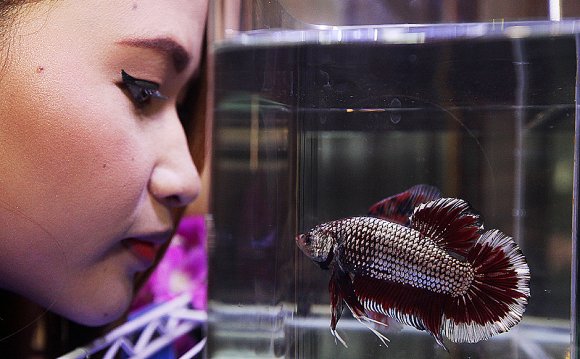
The Siamese fighting fish Betta splendens is a facultative air-breathing freshwater fish often used for studying the physiological bases of agonistic behaviors. The agonistic interactions typical of paired male conspecifics are energetically costly, as indicated by associated increases in whole-animal metabolic rate. However, little is known about the biochemical responses that underlie metabolism and performance during agonistic encounters. We examined biochemical indices of aerobic and anaerobic energy metabolism in locomotory muscle to ascertain whether they are important correlates of aggressive behavior. Pairs of male B. splendens were allowed to interact aggressively across a glass partition while their behaviors were quantified (striking, opercular flaring, surfacing for air) and the levels of several key metabolites (including lactate, creatine phosphate, free creatine, adenosine triphosphate, free adenosine diphosphate) and activities of enzymes of aerobic (citrate synthase) and anaerobic (pyruvate kinase, lactate dehydrogenase) metabolism were assayed in their muscle at the end of the trial. More aggressive fish (those exhibiting a higher strike frequency) had higher surfacing frequencies (presumably to access aerial oxygen), as well as higher aerobic capacities (as indicated by citrate synthase activity), higher levels of lactate and lower levels of creatine phosphate in the muscle at the end of an encounter. In contrast, the capacity for glycolysis and anaerobic metabolism (as indicated by pyruvate kinase and lactate dehydrogenase activities) did not vary with aggression. This suggests that a high capacity for oxidative phosphorylation, either during or in recovery from agonistic encounters, underlies aggressive behavior. Although more actively striking fish make greater use of anaerobic glycolysis, they do so only to a modest extent that is within a capacity that does not vary between individuals with different levels of aggression. Overall, the use of, and biochemical capacity for, aerobic metabolism appears to be an important correlate of fighting performance in B. splendens.









